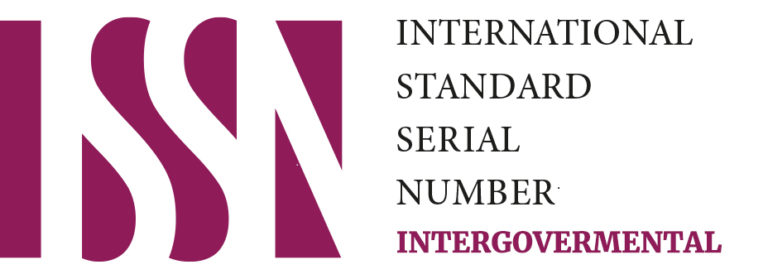Objective:
Our primary objective was to determine the journal efficiency by measuring the time-lag in the acceptance and publication of scientific findings by a journal on behalf of the authors upon submission.
Methods:
This paper is a part of an ongoing series that is aimed to address the journal efficiency of all journals in the general medical, neurology, mental health, and public health domains. For this part, we selected the annals of the Indian academy of neurology. To collect necessary efficiency parameters, we assessed the latest issue of the journal, and collected details about the dates of submission, acceptance, and publication of original research articles. All data was entered in MS-Excel and, after that, the time lag between each step was calculated by using simple mathematical formulae.
Results:
The journal published a total of 11 original research articles in its latest May-June 2020 issue. The average timelag from submisson to acceptance (step-1) was 40.1 (95%CI 14.6-65.5, range 2-126) days, while the timelag between article submission and its publication (step-2) was 283.3 (95%CI 173.4-393.2, range 37-522) days. The percent difference in the delay from article acceptance to its publication was 150.4% higher than for acceptance alone of the article.
Conclusions:
We affirm that the journal had a reasonable average timelag between article submission and its acceptance; although it varied upto 126 days. Moreover, the journal fails grossly in efficiency parameters by having a timelag of 150.4% more for final publication after acceptance, and an average delay of 283.3 (95%CI 173.4-393.2) days for publication, and took upto 522 days for publishing the accepted articles. Such unethical timelag disadvantages the authors alone, corrupts the entire publication ecosystem, and, also, brings up many questions regarding the possible repercussions of such delays on the author’s profession, mental health, and academic returns, etc. due to journal inefficiency. We consider that it is a high time that the journals start to realize their duties and obligations towards their authors pertaining to their efficiency.
INTRODUCTION
The journals boast their position to prospective authors through mainly the use of three arguments, including that they have an Impact Factor or CiteScore, are listed and indexed in popular databases, and can accomplish fast decision making.1 Everyone seems to be interested in speaking about the first two arguments, while no one seems to be interested about the third one, i.e. the demonstrated efficiency of a journal in their duty of publishing reviewed research findings on behalf of the authors.
The journal efficiency alongwith its parameters and methods have been discussed in details in a separate published paper.2 We have conducted this brief research exercise in continuation of our vision to make the entire publication process coherent, convenient, fulfiling for the authors, and to also protect the rights of submitting authors to have a time-bound, convenient, and efficient service from their service-providers, i.e., the journals, whether paid or unpaid. This objective of our study was to determine the journal efficiency by measuring the timelag in the acceptance and publication of scientific findings by a journal on behalf of the authors upon submission..
METHODS
This paper is a part of an ongoing, long, and unique series that is aimed to study the operational efficiency of all general medical and speciality journals in neurology, public health, and mental health. The journals chosen are those that publish original research articles in online form, and are listed in any of the recognised databases but, not limited to Medline. In each series, a single journal is selected based on the judgment sampling strategy. After that, the latest issue of the selected journal3 is taken for collection of efficiency parameters. These parameters include the timelag between article submission to its acceptance and its online publication (in any form and length). For this part of series, we selected Annals of Indian Academy of Neurology (AIAN). The impact factor of this journal is 0.9 and it is listed in PubMed. The latest issue (May-June 2020) of this journal was accessed for all original articles, and the timelag between the date of article submission to its acceptance (step-1) and its online publication (step-2) was calculated by using simple mathematical formulae. The timelag was calculated for each article, which was then averaged. We also estimated the 95.0% confidence interval of the mean timelag as well. The data discussed here are open and present in the public domain. The ethics approval was obtained from the institutional review board of the Pôle Universitaire Euclide Intergovernmental UN Treaty.
RESULTS
The latest issue of this journal was May-June 2020. For this issue, a total of 11 original research articles were found to be published online till the day of data collection, i.e. end of June 2020. Based on these original research articles, the average timelag from submisson to acceptance (step-1) was 40.1 (95%CI 14.6-65.5, range 2-126) days, while the timelag between article submission and its publication (step-2) was 283.3 (95%CI 173.4-393.2, range 37-522) days. The percent difference from acceptance to publication was 150.4% higher than the timelag for article acceptance alone. In terms of level of convenience by the journal, the journals asks for excessive documentation at the time of article submission, including the copyright forms, declarations, and author signatures.
DISCUSSION
AIAN was selected because it is one of the major journals in neurology. AIAN’s scope states that “it intends to improve the practice of neurology and believes in following an expeditious double-blind peer review process and endeavors to complete the review process within scheduled time frame”.1 So, first of all, there is no evident mention to the prospective authors about how the journal would accomplish their goal of expeditious peer-review within stipulated but undefined time frame.
No doubt, it was seen that the journal is publishing articles with a mean lag of about 283 days, and lasting up to 393 days but ranged upto 522 days. Such unethical delays in mere task of publishing an article brings us to question the rationality of the entire operation of such journals. Such delays are there even if the only task of a journal is to publish articles, “The journal has a clinical foundation and has been utilized most by clinical neurologists for improving the practice of neurology. While the focus is on neurology in India, the journal publishes manuscripts of high value from all parts of the world”.
Moreover, while the average timelag for the acceptance from submission of an article was reasonable, yet, the average timelag for publication was on average 150.4% more, even after having the article accepted. The authors submit their research findings to a journal to publish their findings, and not solely for an acceptance alone. Could we consider such journal operations as efficient, especially in the light of the fact that the journals tend to put conditions of their favour alone on the authors? “We accept for publication unpublished manuscripts on the understanding that the same manuscript is not under simultaneous consideration of other journals”.
The reasons for excessive delays in publication can be many, including the possibility that the journals operate without any sort of evident assurance to the authors for their efficient and sustainable day-to-day operations. As an example, a manuscript submitted to a journal in West EU was referred to an estimated 64 different reviewers, and none of the 64 completed their task over six months of time delay and loss to the authors (personal data, D Bhalla).
The only task of the journal is to publish research findings submitted by an author after a peer-review. However, the journals have also consolidated their position in roles that are not theirs, undermining the authors to a considerable extent. For instance, the authors should provide at the time of submission “Declaration of originality, authorship and competing interest on behalf of all authors of the manuscript“, signed by all authors. But, there are no clarity or written obligations on the part of the journals about the possible misuse of such signatures. It is similarly interesting that the journal do not mention about their duties to the prospective authors about, for instance, how they would accomplish their goal of “expeditious peer-review within stipulated time frame”1, and what penalities are applicable to the journals if such goals are not met.
CONCLUSION
We may affirm that the journal we addressed in this paper had an average reasonable timelag between article submission and its acceptance. However, the timelag was 150.4% more for final publication and dissemination of author’s research findings lagged on average 283.3 (95%CI 173.4-393.2) days and ranged upto 522 days; suggesting that the journal fails grossly in journal efficiency parameters. Such unethical timelags disadvantage the authors alone, and, therefore, brings up many questions regarding the possible repurcussions on the author’s profession, mental health, and academic returns, etc. due to journal inefficiency. The journal inefficiency can also be viewed in terms of delays in access and benefits that the patients, health agencies, and the public may have from the author’s scientific information. We consider that it is a high time that the journals start to realize their duties and obligations towards their authors.
SUPPLEMENT
Conflicts of Interest: DB receives research funds and attends and gives a talk in meetings that may have been funded directly or indirectly by commercial entities. All other authors have no conflicts of interest. All data used are open and available in the public domain.
Acknowledgment/Funding: Not applicable.
REFERENCES
1.Bhalla, D. About Us; 2020 [cited 2020 25 June]. Available from: http://www.annalsofian.org/aboutus.asp
2.Bhalla, D., Cleenewerck, L. Bhalla-Cleenewerck Journal efficiency factor, BC-JEF©-a novel author-centric metric for Journal efficiency. Intergovernmental Res Policy J UN Treaty. 2020; (e20):1-5 (Article ID: 201).
3. Bhalla, D. Current Issue; 2020 [cited 2020 25 June]. Available from:
http://www.annalsofian.org/currentissue.asp?sabs=n






